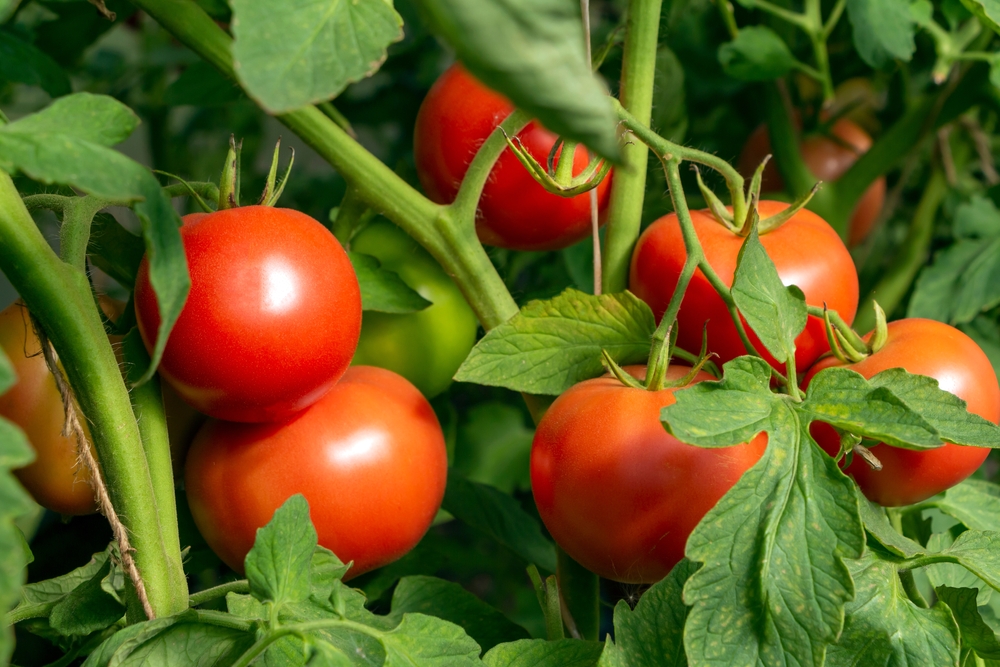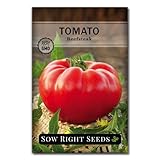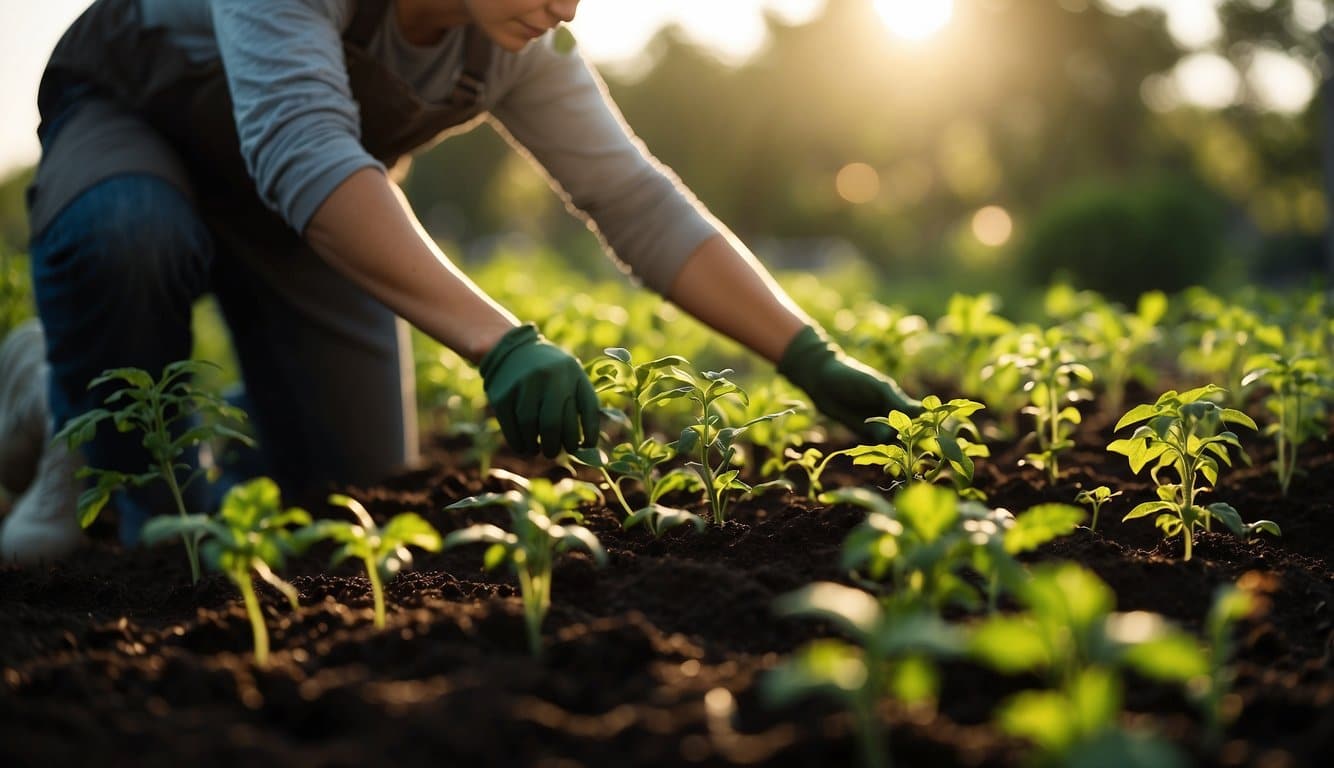| Question | What’s the best time of year to plant tomatoes in Alabama? |
|---|---|
| Answer | After the last frost date in spring. |
| More Info |
|

In Alabama, the best time to plant tomatoes is after the last frost date in spring to avoid cold damage. This typically falls around early to mid-April for most of the state, but it can vary depending on your specific location.
To ensure a successful harvest, consider starting your tomato seeds indoors 6-8 weeks before the last expected frost and then transplanting them outdoors when the weather warms up.
It’s also a good idea to check local extension services or gardening groups for precise planting times in your area, as Alabama’s climate can vary from north to south. For a fall harvest, you can plant tomatoes in late July to early August.
The Recipe for Success
- Timing tomato planting with the last average frost date boosts success.
- Starting seeds indoors allows for controlled early growth.
- Adequate care and sunshine are essential for thriving tomato plants.
Planting Calendar Overview
Gardeners in Alabama need to schedule their tomato planting to align with the state’s unique climate patterns. Careful attention to local frost dates and optimal growing times ensures a bountiful harvest.
Optimal Planting Months for Tomatoes
In Alabama, the prime months to plant tomatoes fall between March and April for the spring season. As tomatoes require a warm growing season, this period allows the plants to establish themselves after the threat of frost has passed and before the intense heat of summer begins.
For a fall harvest, July is considered an appropriate time to start transplanting tomato plants into the garden.
- Spring Planting: March – April
- Fall Planting: July
Last Frost Dates
Knowing the last frost dates is crucial for gardeners when deciding when to plant tomatoes. While these dates can vary slightly from year to year, the following are the estimated last frost dates for different regions:
- Northern Alabama: April 15th
- Central Alabama: April 1st
- Southern Alabama / Dothan region: March 10th
These dates serve as a guideline, and local gardeners may want to monitor weather forecasts closely as they prepare to plant. Frost can be unpredictable and even a light one can damage tomato seedlings.
It’s generally safe to plant outdoors once these dates have passed, but it’s always wise to have protective measures in place such as frost cloths or temporary covers.
Preparing for Planting
Before one can look forward to the lush reds of a ripe tomato harvest, they must lay the groundwork for successful growth. This begins with the careful preparation of the soil and the selection of appropriate tomato varieties for Alabama’s climate.
Soil Preparation
The success of tomato plants is heavily reliant on the quality of the soil in which they are planted.
Gardeners in Alabama should aim for a deep, fertile loam or sandy loam soil. The soil should be well-draining and enriched with organic matter to ensure nutrients are readily available for the growing plants.
- Testing pH Levels: The ideal pH level for tomatoes lies between 6.0 and 6.8. Test the soil and adjust the pH if necessary, using lime to raise and sulfur to lower the pH level.
- Adding Organic Matter: Incorporate compost or well-rotted manure into the soil to boost fertility and improve structure.
- Tillage: Loosen the soil to a depth of at least 6 inches to facilitate root growth.
Choosing the Right Tomato Varieties
Selecting tomato varieties that thrive in Alabama’s hot summers and mild winters is crucial for a bountiful crop. One should choose heat-tolerant varieties to maximize success.
- Heat-Tolerant Cultivars: Varieties like ‘Celebrity’, ‘Better Boy’, and ‘Cherokee Purple’ are known for their resilience in warmer climates.
- Disease Resistance: Look for cultivars resistant to common diseases in the region, such as verticillium and fusarium wilt.
- Growth Habits: Consider the growth habits of different tomatoes—determinate varieties bear fruit all at once while indeterminate varieties produce continuously throughout the season.
Frequently Asked Questions
Choosing the right time and approach to plant tomatoes can greatly impact the success of the harvest. This section addresses common queries regarding the planting of tomatoes in Alabama.
What is the optimal month for planting tomatoes in Alabama?
The best time to plant tomatoes in Alabama generally falls between mid-March and early May, depending on the local climate zone. Gardeners should watch for the last frost date to pass before planting.
How should you prepare the soil for tomato cultivation in southern Alabama?
For tomato cultivation in southern Alabama, gardeners should aim for deep, fertile loams or sandy loam soils. Soil preparation includes enriching with compost and ensuring proper drainage to enhance plant health.
What is the latest planting date for tomatoes to ensure a healthy harvest in Alabama?
To ensure a healthy harvest in Alabama, one should plant tomatoes no later than early May. This allows the plants to establish and fruit before the hottest summer months.
How frequently should tomato plants be watered in the Alabama climate?
Tomato plants in Alabama should be watered deeply about once a week, with adjustments made for rainfall, soil type, and temperature. Consistent moisture is key to preventing blossom-end rot and split fruit.
In Alabama, which vegetables can be companion planted with tomatoes?
Some good companions for tomatoes in Alabama include basil, onions, lettuce, and carrots. These plants can aid in tomato growth by repelling pests and improving soil conditions.
What are the guidelines for following the Alabama vegetable planting calendar, specifically for tomatoes?
When following the Alabama vegetable planting calendar for tomatoes, gardeners should start seeds indoors around 60 days before the last frost date. They should also consider local weather conditions and soil temperatures before planting outdoors.
What Types of Tomatoes Grow Best in Alabama
Alabama’s climate can be quite accommodating for a variety of tomato plants, but some cultivars tend to flourish more than others.
Gardeners in the state should consider these tomato types for the best chances of a bountiful harvest:
- Sun Gold Tomatoes: These are small, cherry-type tomatoes that are known for their sweetness and vigorous growth, making them a good choice for Alabama’s warm climate.
- Big Boy Tomatoes: A reliable beefsteak variety, Big Boy tomatoes produce large, juicy fruits perfect for slicing. They adapt well to the Alabama heat.
- Roma Tomatoes: With a resistance to many common diseases and a determinate growth habit, Roma tomatoes are ideal for canning and sauce-making.
- Cherokee Purple: An heirloom variety cherished for its unique color and rich flavor. They require more care but reward Alabama growers with distinctive and delicious tomatoes.
Gardeners should ensure they select varieties that align well with the local soil type and weather patterns.
Most tomatoes need well-draining soil, and while some can tolerate clay soils, they generally prefer loamy or sandy loam varieties for optimal growth.
Additionally, consistent care and attention to watering and pruning can greatly influence the success of these tomato types in Alabama gardens.
Last update on 2025-06-06 / Affiliate links / Images from Amazon Product Advertising API






